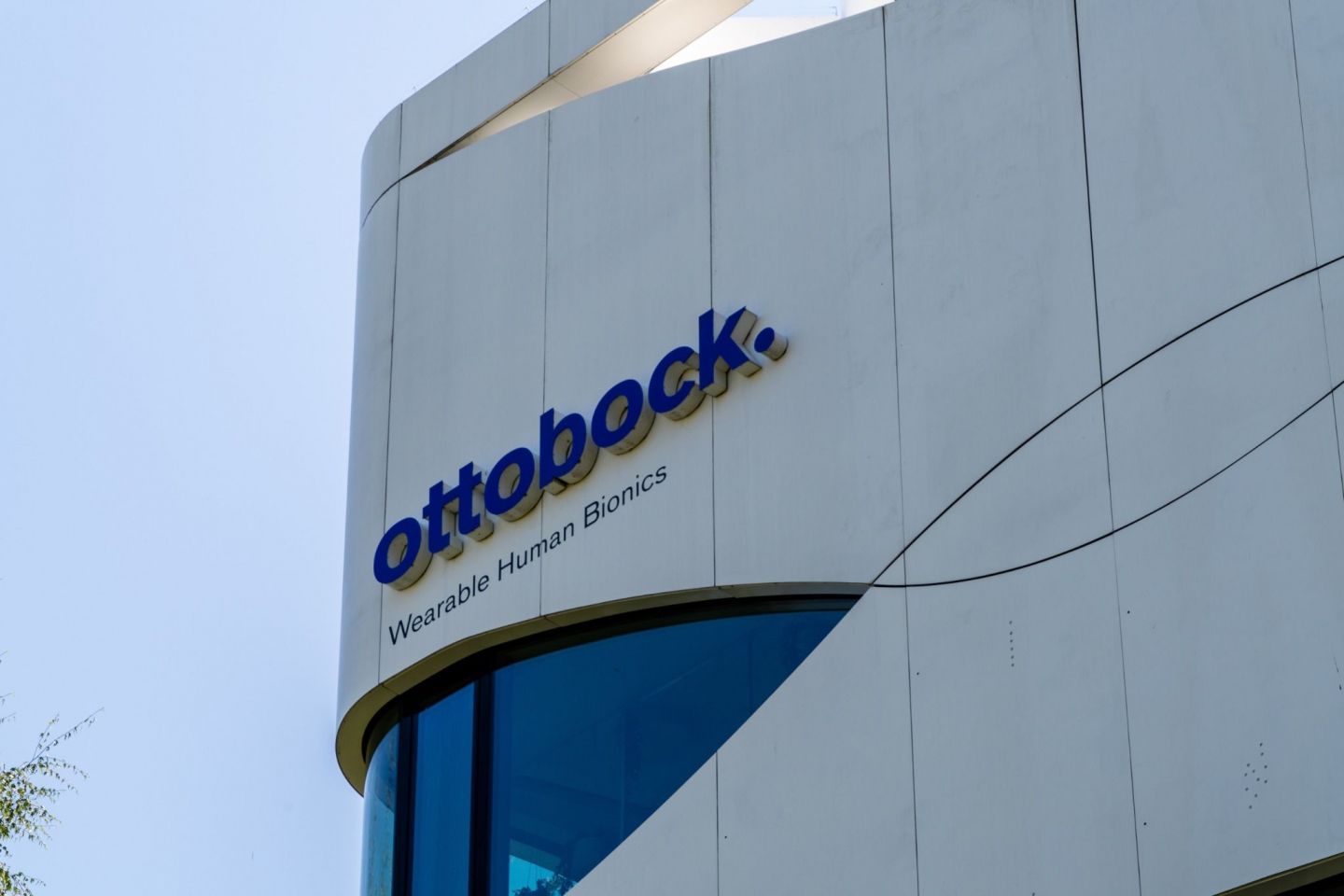Ottobock IPO: how to trade Ottobock shares

IPO stocks are often highly volatile, and early trading can involve rapid price swings and significant risk.
Create an account Open a demo account
When is the Ottobock IPO date?
The Ottobock IPO date was 9 October 2025, when the company raised €808 million at €66 per share (top of range), achieving a €4.2 billion valuation (Reuters, 9 October 2025). Ottobock is widely regarded as one of Germany’s most innovative medtech companies, a global leader in prosthetics and orthotics, and a potential flagship listing for the Frankfurt Stock Exchange when the initial public offering happens.
Ottobock has been controlled by the Näder family since its founding in 1919, but in 2017 it sold a 20% stake to EQT, the Swedish private equity giant, in a deal that valued the company at around €3.15bn. At the time, both EQT and the Näder family made clear that an IPO was the logical next step. Initial preparations were even reported in 2019, but the pandemic, supply chain disruptions, and market turbulence caused delays.
Why list now?
For EQT, the Ottobock IPO provides the liquidity it typically seeks within 5-7 years of an investment. For Ottobock, going public offers both growth capital and global visibility. The medtech sector is highly competitive, with rivals in the US and Japan investing heavily in robotics and digital tools. A public float gives Ottobock the resources to match that pace.
A listing also fits with broader trends. Europe has sought to attract more high-profile IPOs after a period of relative drought, and Ottobock, as a century-old German industrial champion reinventing itself as a digital medtech company, provides exactly the kind of story Frankfurt hopes to showcase.
What is Ottobock?
Ottobock is a German medtech and prosthetics manufacturer headquartered in Duderstadt, Lower Saxony. Founded in 1919 by Otto Bock, the company initially specialised in supplying prosthetics for World War I veterans. Over the next century, it expanded into orthotics, wheelchairs, rehabilitation devices, and, most recently, robotics and digital health. Today, Ottobock is a global market leader in prosthetics, operating in 45 countries and employing around 9,300 people (Ottobock, 10 October 2025).
Product portfolio
Ottobock’s range is diverse. The prosthetics division remains the largest revenue driver, with flagship products like the Genium X3 bionic knee and the Michelangelo hand, both considered industry benchmarks. Orthotics, including braces and supports for musculoskeletal conditions, provide another revenue stream. Its wheelchairs and mobility solutions business spans both manual and powered devices, serving elderly and disabled populations worldwide.
The company also runs clinics and rehabilitation centres, where patients are fitted with Ottobock devices and receive long-term care. This service model generates recurring revenue and strengthens brand loyalty. In recent years, Ottobock has invested heavily in digital health solutions – for example, AI-powered fitting systems that improve prosthetic alignment, and robotic exoskeletons designed to assist workers in industrial settings.
Global footprint
Ottobock’s operations span Europe, North America, Asia, Latin America, and Africa. The US is a major growth market, where insurance coverage for advanced prosthetics has expanded. Asia-Pacific, particularly China and Japan, offers long-term growth as healthcare systems modernise and disability awareness increases. Europe remains Ottobock’s base, with Germany both its manufacturing hub and home market.
Key milestones
1919 – Otto Bock founds the company in Berlin.
1946 – HQ moves to Duderstadt after WWII.
1980s – Expansion across Europe and North America.
1990s – Globalisation accelerates, with subsidiaries across Asia.
2017 – EQT acquires 20% stake, valuing the firm at €3.15bn.
2019 – Early IPO reports surface.
2020-2022 – Pandemic delays listing, focus shifts to digital health.
2025 – IPO completed on 9 October.
Why it matters
Ottobock is more than just a prosthetics manufacturer. It is a symbol of German industrial innovation, adapting to new technologies while maintaining leadership in its field. The Ottobock IPO gave investors access to a rare combination: a century-old company with deep heritage and a forward-looking medtech innovator expanding into AI, robotics and digital health.
How does Ottobock make money?
Ottobock’s revenue comes from a mix of products and services, making it more resilient than pure-play device makers.
| Revenue stream | Description |
|---|---|
| Prosthetics | These are sold to hospitals, insurers, and clinics worldwide. Orthotics provide steadier, lower-margin revenue but are less cyclical, as they cover a wide range of conditions. Wheelchairs and mobility solutions contribute additional sales, particularly in markets with ageing populations. |
| Orthotics | These provide steadier, lower-margin revenue but are less cyclical, as they cover a wide range of conditions. Wheelchairs and mobility solutions contribute additional sales, particularly in markets with ageing populations. |
| Clinical services | By operating clinics that provide fittings, rehabilitation, and long-term patient care, Ottobock generates recurring revenues and builds brand loyalty. These services also create valuable data, which feeds into the company’s R&D efforts. |
| Digital health and robotics | These include AI-powered fitting tools and exoskeletons for rehabilitation and industrial applications. Though still early-stage, these segments could become future growth drivers, positioning Ottobock at the intersection of medtech and advanced robotics. |
What might influence the Ottobock stock price?
The Ottobock stock price following its IPO will be shaped by macro conditions, company performance, competitive pressures, regulatory factors and broader investor sentiment.
Macroeconomic and sector trends
Healthcare is relatively defensive, but prosthetics adoption depends on healthcare funding and reimbursement. As ageing populations and lifestyle diseases like diabetes drive demand for prosthetics, Ottobock benefits from structural tailwinds. However, recessions or government austerity can reduce healthcare budgets. Currency fluctuations, particularly between the euro and the U.S. dollar, will also affect earnings, as North America is a major growth market.
Company fundamentals
Investors will assess Ottobock’s revenue growth, margins, and profitability. Strong sales of advanced bionic prosthetics will support higher valuations, especially if paired with growth in digital health and robotics. Investors will also watch clinical expansion, as recurring revenues from rehabilitation services add stability. Innovation is another key factor: Ottobock must continue to launch new products and maintain its reputation as a technology leader.
Competition and differentiation
Ottobock’s main rivals are Össur, Hanger, Stryker, Zimmer Biomet, and Japanese medtech players. While competition is intense, Ottobock’s differentiation lies in its history, scale, and R&D leadership. If competitors out-innovate Ottobock or undercut it on price, margins could be pressured. Conversely, if Ottobock maintains its innovation edge, it can defend premium pricing and capture market share.
Regulation and governance
Medtech companies face strict regulation. Ottobock must navigate approvals from the FDA, EMA, and other authorities. Delays in product approvals or compliance issues could weigh on sentiment. Governance will also be closely watched: balancing the Näder family’s heritage role with EQT’s financial discipline and public shareholder expectations will be delicate.
Valuation scenarios
Ottobock listed at €4.2 billion, with shares opening at €72 (Reuters, 9 October 2025). A bull case would assume robust prosthetics sales, successful digital-health expansion and strong margins, pushing the price higher. A bear case would see reimbursement headwinds, slower clinic growth or competitive pricing pressure, weighing on the share price.
Investor sentiment
The European IPO market has been patchy in recent years, with some listings underperforming. The Ottobock listing performed well on debut, reflecting positive appetite for healthcare stocks, particularly for companies with defensive growth profiles. Continued support from European and global funds may be critical for maintaining momentum.
You can keep your finger on the pulse of the markets with expert insight from our in-house analysts. Check out our news and analysis section for more.
How to trade Ottobock shares via CFDs
Since Ottobock listing on 9 October 2025, traders are able to speculate on its shares via contracts for difference (CFDs). CFDs allow you to capture price movements without owning the underlying shares, offering flexibility in volatile IPO markets.
How to get started
- Step 1: Choose a platform Use a broker like Capital.com to access global fintech shares.
- Step 2: Open an account Complete ID verification and the suitability assessment to begin trading.
- Step 3: Fund your account Deposit capital securely by bank transfer, card, or e-wallet.
- Step 4: Track IPO details Review the filing documents, price range, and post-IPO price movements to gauge sentiment.
- Step 5: Place your trade Go long if you expect Ottobock to rally, or short if you anticipate it to fall, and consider applying stop-loss orders* to manage risk.
Note: Ottobock shares, like with all post-IPO stocks, may be volatile, especially in the early days of trading. CFDs let you act on price swings in either direction, but always apply risk management. CFDs are traded on margin, and leverage higher than 1:1 magnifies potential losses and gains. Past performance is not a reliable indicator of future results.
Learn more about contracts for difference in our CFDs trading guide. *Standard stop-loss orders are not guaranteed. Guaranteed stop-loss orders incur a fee when activated.
Which medtech stocks can I trade?
Ottobock completed its IPO and listed publicly on 9 October 2025. Traders can also gain exposure to related medtech stocks:
- Stryker (SYK) – US orthopaedics and robotics leader.
- Zimmer Biomet (ZBH) – global orthopaedics company.
- Medtronic (MDT) – diversified medtech multinational.
FAQs
What is the Ottobock IPO?
The Ottobock IPO was the listing of Ottobock on the Frankfurt Stock Exchange on 9 October 2025, raising €808 million at €66 per share and achieving a €4.2 billion valuation.
When did the Ottobock IPO take place?
The Ottobock IPO took place on 9 October 2025.
What is Ottobock worth?
Ottobock was valued at €4.2 billion at IPO, having been valued at €3.15 billion in 2017 when EQT acquired a 20% stake.
What does Ottobock do?
Ottobock designs and sells prosthetics, orthotics, wheelchairs, mobility solutions, and clinical rehabilitation services.
Discover more upcoming IPOs
Stay informed on upcoming IPOs, market trends, and the newest trading opportunities

Pine Labs IPO
